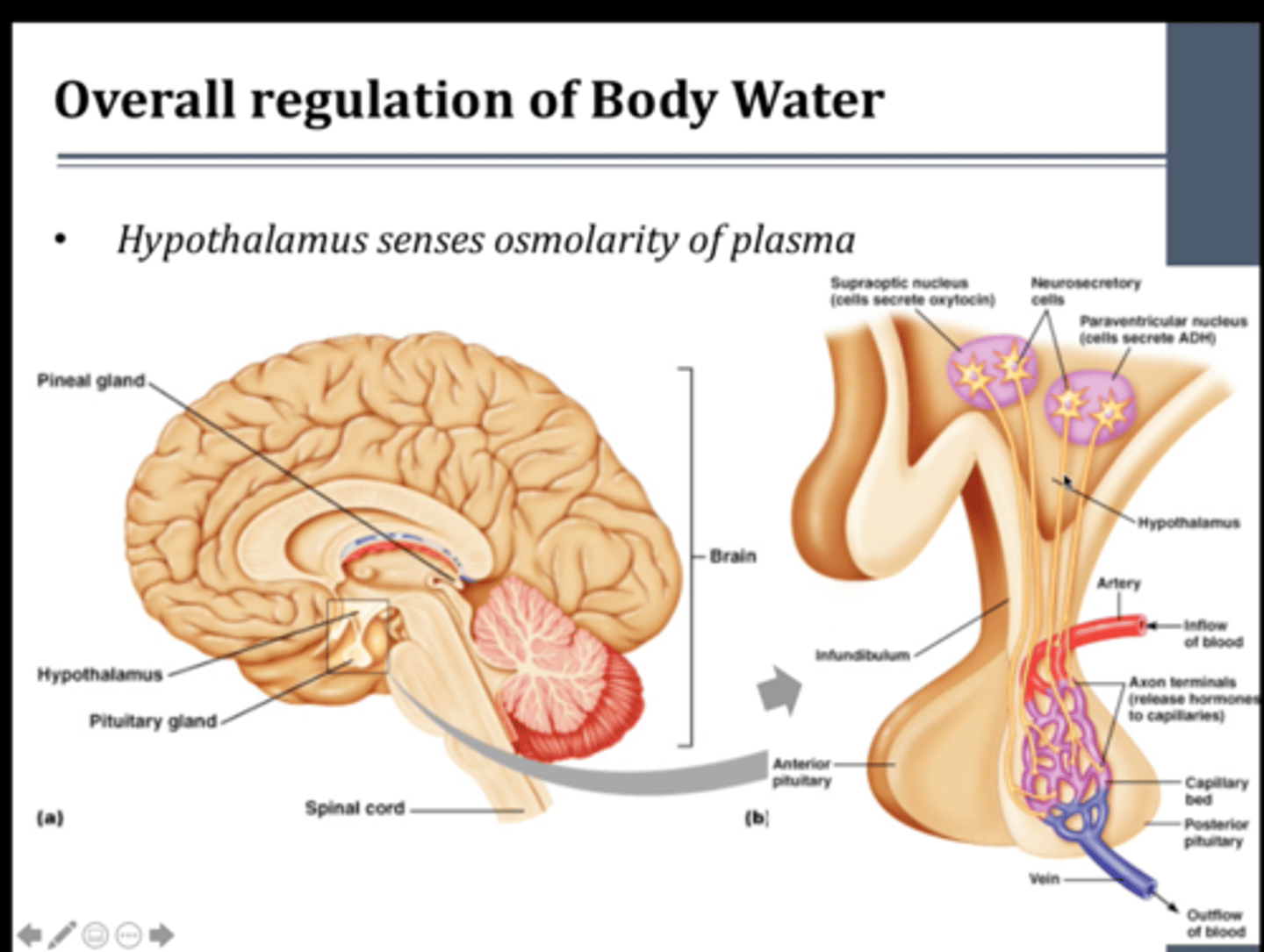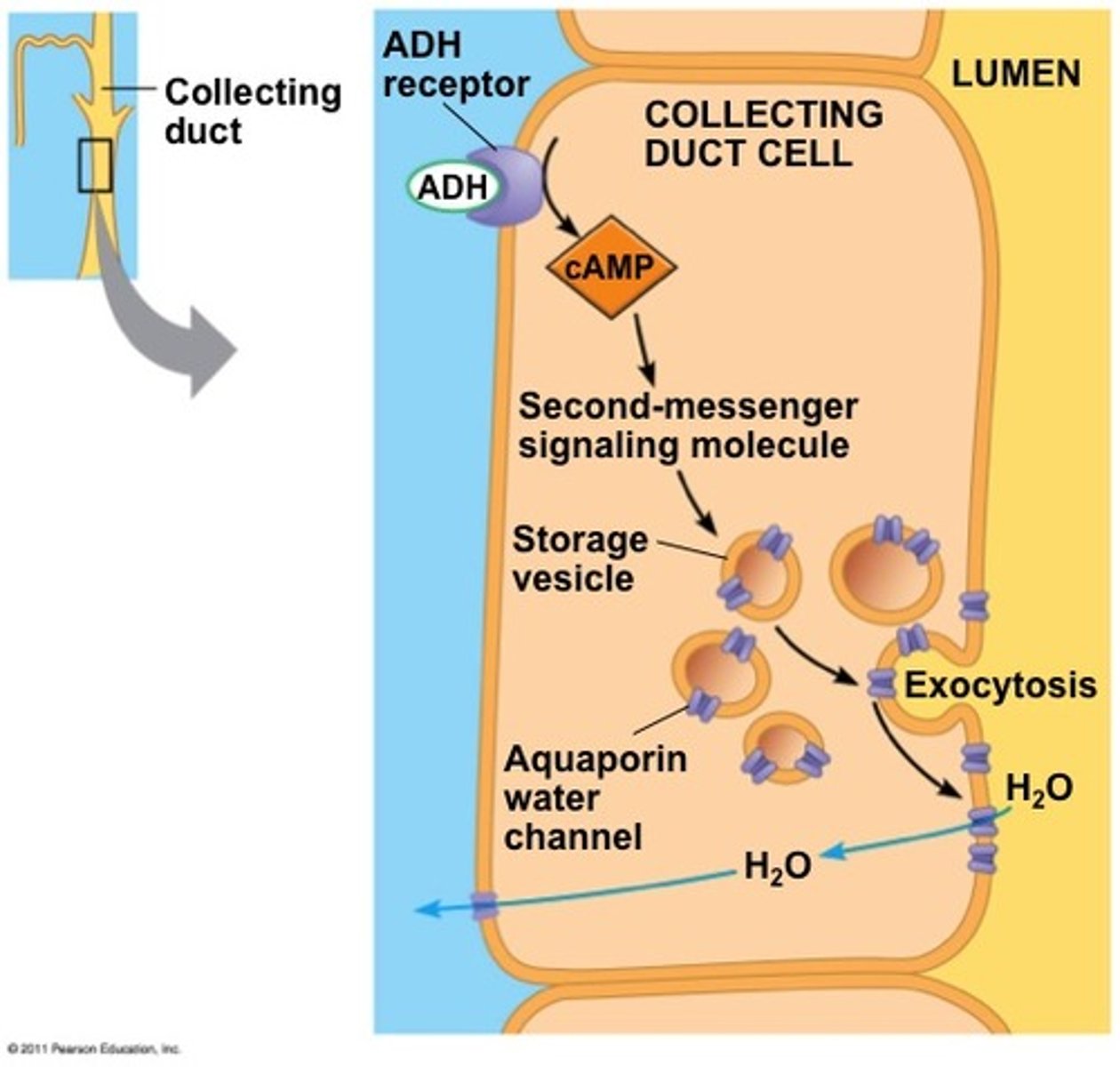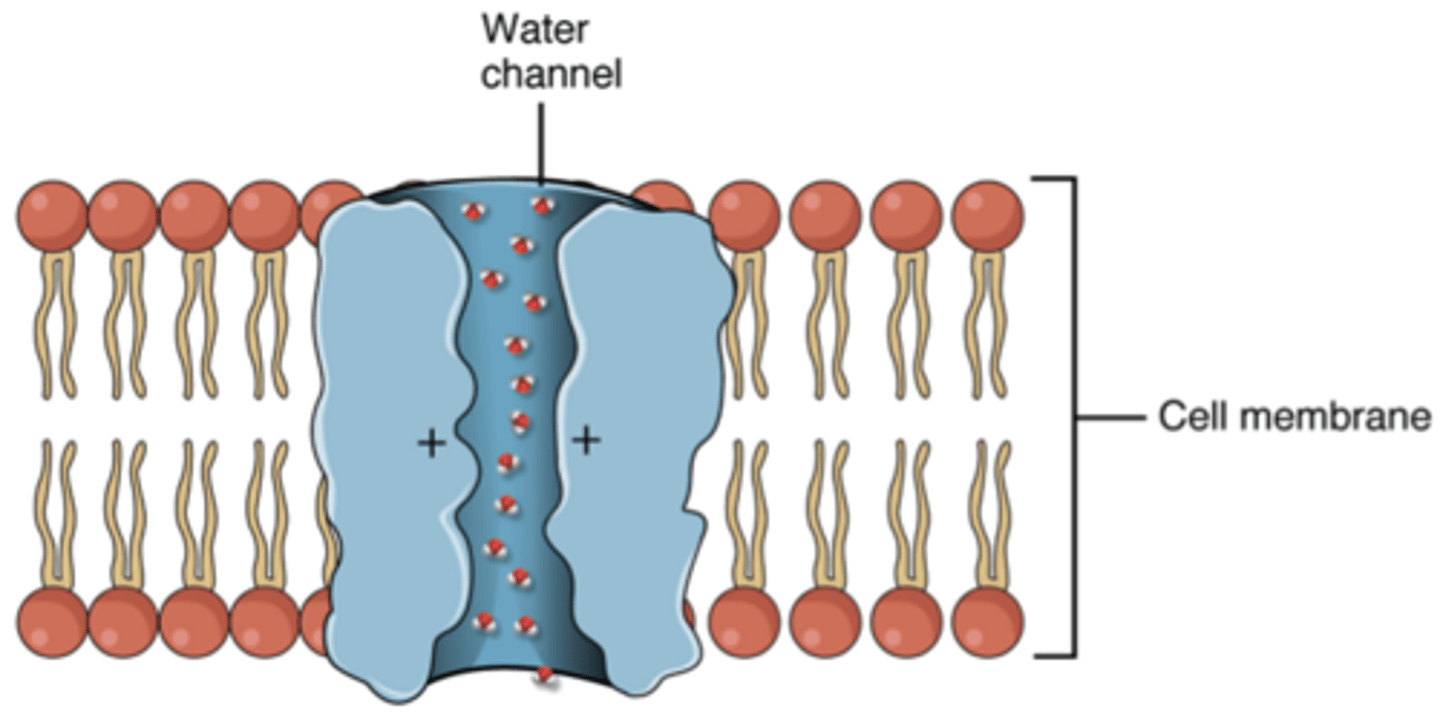Control of Water Potential in Blood
1/17
There's no tags or description
Looks like no tags are added yet.
Name | Mastery | Learn | Test | Matching | Spaced |
|---|
No study sessions yet.
18 Terms
Which part of the nephron does aldosterone affect?
Distal Convoluted Tubule
What is another name for the control of water potential in the blood?
Osmoregulation
What do osmoreceptors do?
The osmoreceptors in the hypothalamus detect low concentration of water in the blood
What foods decrease the water potential of blood?
Salty food, boiled sweets. This is due to their high salt / sugar content.
What is osmoregulation an example of?
Negative feedback
What hormone controls the amount of water lost in the urine?
ADH
What produces ADH?
The hypothalamus produces ADH.
ADH then passes through the neurosecretory cells where it is secreted into the posterior pituitary gland, where it is stored until it is needed to be released.

If there's not a lot of water in the blood, what happens?
ADH is released from the posterior pituitary gland and transported to the kidneys in the blood
Collecting duct

Where are the target cells for ADH found?
In the walls of the collecting duct
What does ADH do?
It increases the permeability of the distal convoluted tubule and the collecting duct to water.
Mechanism of ADH action
ADH is released from the pituitary gland and carried in the blood to the cells of the collecting duct.
The hormone does not cross the membrane of the tubule cells. Receptors are complementary and specific in shape to ADH, and it binds to these receptors on the cell surface membrane
This triggers the formation of cAMP as a second messenger in the cell
cAMP causes a cascade of events

cAMP cascade caused by ADH action Process:
Vesicles in the cells lining the collecting duct fuse with the cell surface membranes on the side of the cell in contact with the tissue fluid of the medulla
The membranes of these vesicles contain aquaporins.
So when they are inserted into the cell surface membrane, they make it permeable to water
This provides a route for water to move out of the tubule cells, into the tissue fluid of the medulla and the blood capillaries by osmosis
Allows more water to be reabsorbed into the blood stream, conserving body water and preventing dehydration and reducing urine output.
What's the goal of ADH?
Allows more water to be reabsorbed into the blood stream, conserving body water and preventing dehydration and reducing urine output.
The more ADH released...
...the more water channels that are inserted into the membranes of the tubule cells.
Aquaporins
Intrinsic protein pores
They form pores through the phospholipid bilayer
They selectively conduct water in and out, but prevent the passage of other ions and solutes

Are aquaporins permanent?
No they have a half life
Low ADH levels
Cell surface membrane folds inwards, creating new vesicles
These remove the aquaporins, making the membrane less permeable
The urine is more dilute